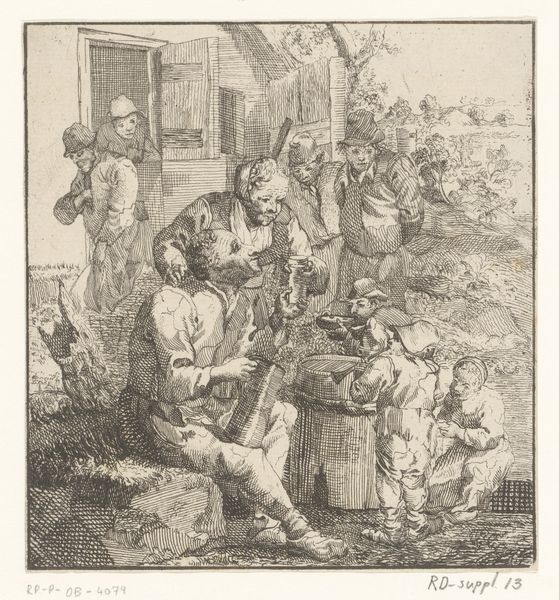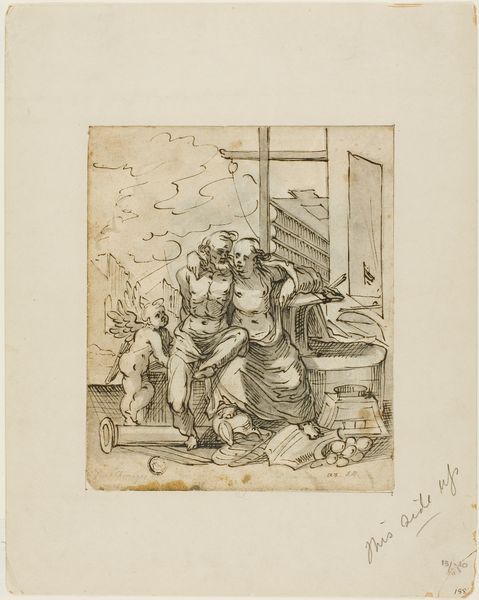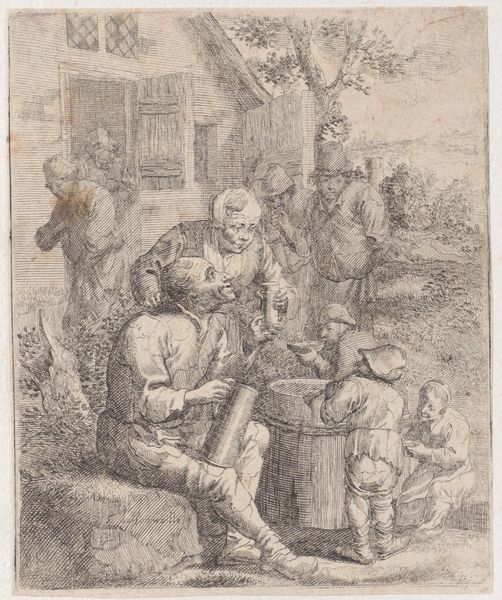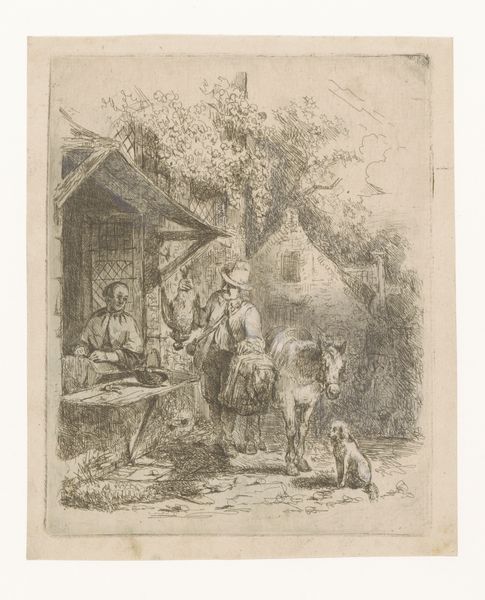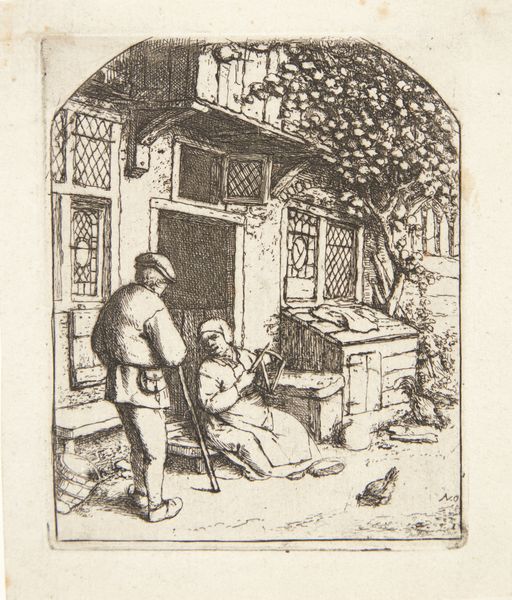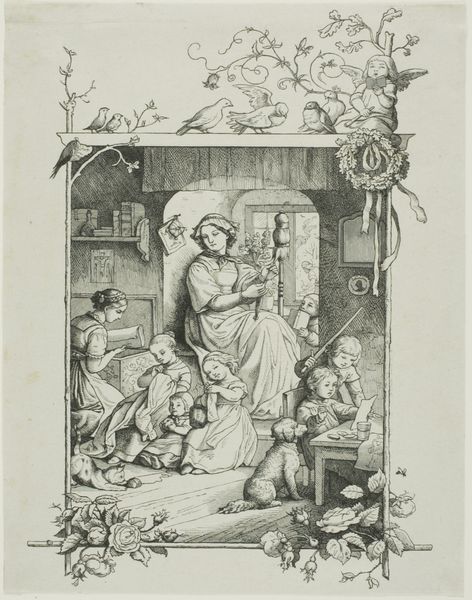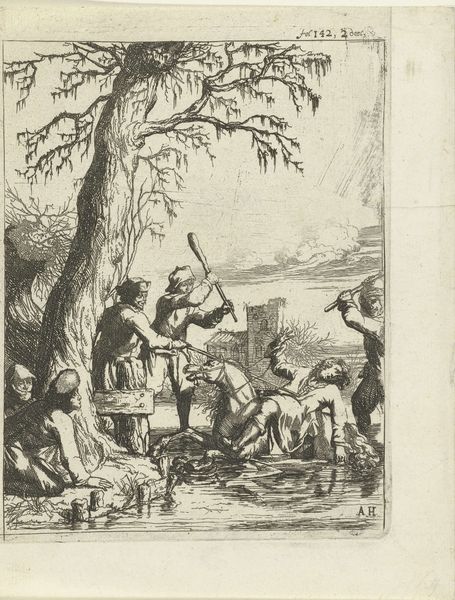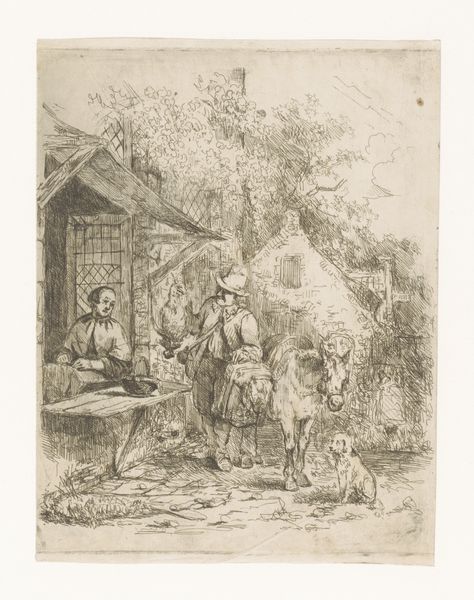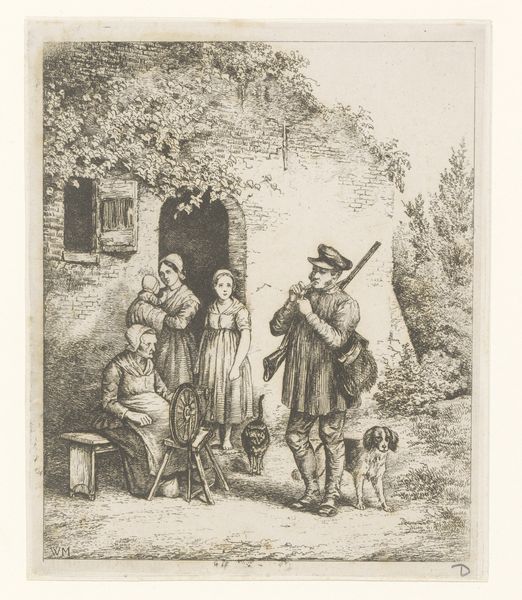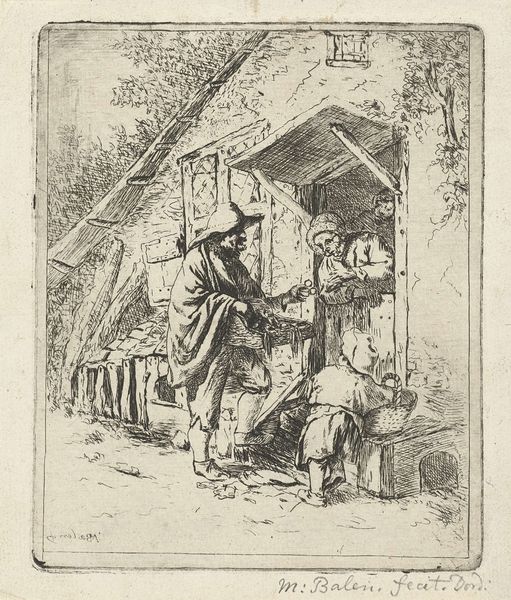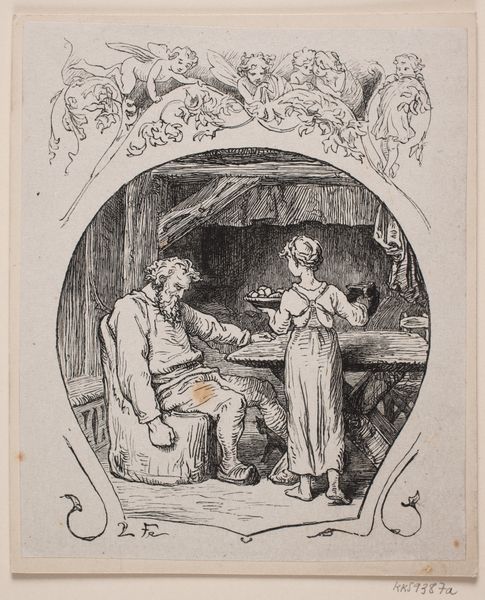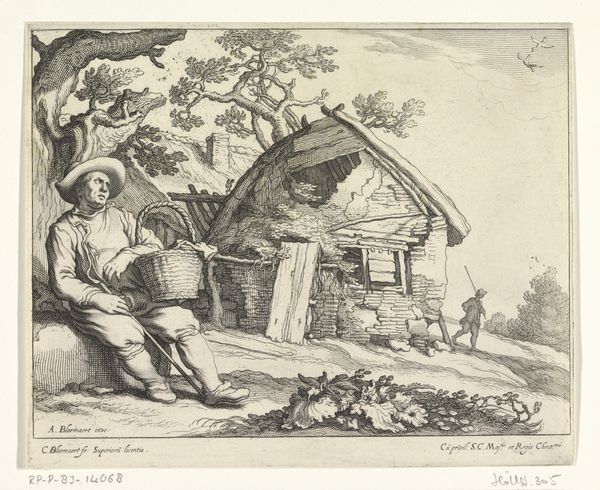
drawing, print, etching, ink
#
drawing
# print
#
etching
#
asian-art
#
landscape
#
ink
#
sketchwork
#
genre-painting
#
rococo
Dimensions: Sheet (trimmed): 11 3/4 × 9 1/4 in. (29.8 × 23.5 cm)
Copyright: Public Domain
Editor: This is "Tea," a print by Gabriel Huquier from between 1733 and 1743, currently held at The Met. The etching is delicate, depicting two figures in what appears to be a Chinoiserie setting. It's like a whimsical vignette, but what stands out is how the “East” is imagined. How do you interpret the cultural context presented here? Curator: Well, that "imagining" is key. Pieces like "Tea" exemplify the European fascination with the "Orient" during the Rococo period. It’s not an accurate representation of Chinese culture, but rather a romanticized and often distorted vision, a product of limited understanding and colonial power dynamics. It played into European fantasies. Editor: So it’s less about China and more about Europe's projection? The way the architectural details seem “off” makes more sense now. Curator: Precisely. Consider the presence of tea itself. Tea became a coveted commodity controlled by the British East India Company. Depicting a "tea ceremony" caters to the aristocratic European interest but lacks authentic detail, essentially functioning as a marketing of exotic fantasy, distanced from true understanding of culture. What effect do you think this image would have on a European audience unfamiliar with Chinese customs? Editor: It might reinforce a sense of cultural superiority or otherness. It almost feels like a staged performance. It also kind of shows how the culture was represented based on an incomplete or inaccurate representation, or on their own interests. Curator: Exactly! These Chinoiseries weren't about fostering cross-cultural understanding. They were about solidifying European identity and wealth through the visual appropriation and imaginative manipulation of the "exotic" East. It speaks to a broader trend where cultural understanding and exchange were mediated by commercial interests and power imbalances. Editor: I see. It’s fascinating to consider how seemingly innocent art like this reflects complex cultural narratives of colonialism and trade. I thought I was just looking at a nice drawing of a tea party! Curator: And that’s the power of historical context! It encourages us to critically examine the social and political implications embedded within even the most seemingly decorative works.
Comments
No comments
Be the first to comment and join the conversation on the ultimate creative platform.
